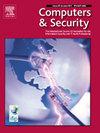Anomalous identity recognition model based on vehicle driving characteristic verification in typical scenarios
IF 4.8
2区 计算机科学
Q1 COMPUTER SCIENCE, INFORMATION SYSTEMS
引用次数: 0
Abstract
Vehicle-to-everything (V2X) enables the exchange and sharing of information between vehicles and the outside world, which improves driving safety, reduces traffic congestion, and enhances traffic efficiency. However, this information exchange and transmission of massive data also exposes many attack surfaces, which may result in security incidents such as vehicle theft, information leakage, and driving failure. Traditional methods to ensure traffic information interaction through information security have limitations. This paper proposes an innovative model for anomalous identity recognition based on vehicle driving characteristic verification. The model aims to ensure consistency among the speed data from different sources, types of transmission data, and perception data obtained by sensors. The model is based on a multi-class support vector machine (multi-class SVM) to identify vehicle behavior and a bidirectional gated recurrent unit (BiGRU) neural network to predict vehicle speed. A credible calculation method was designed to calculate the error between the predicted speed and the actual collected speed in the car-following and lane-changing scenarios. The Next Generation Simulation dataset was used to train and test the models. The experimental results showed that the overall recognition accuracy of the multi-class SVM model was 95.50 %, the predicted precision with an order of magnitude of cm/s was achieved by the BiGRU model, and the overall recognition accuracy of the model was >90 %. The public key infrastructure (PKI) scheme is currently the mainstream scheme of information security in the Internet of Vehicles. This paper analyzes the feasibility of the proposed anomalous identity recognition model applied in the PKI framework, which can effectively identify anomalous vehicle identities by discriminating the vehicle speed and effectively ensure the security between a vehicle and the external network communication (4G/5G/V2X).
基于典型场景下车辆行驶特征验证的异常身份识别模型
本文章由计算机程序翻译,如有差异,请以英文原文为准。
求助全文
约1分钟内获得全文
求助全文
来源期刊

Computers & Security
工程技术-计算机:信息系统
CiteScore
12.40
自引率
7.10%
发文量
365
审稿时长
10.7 months
期刊介绍:
Computers & Security is the most respected technical journal in the IT security field. With its high-profile editorial board and informative regular features and columns, the journal is essential reading for IT security professionals around the world.
Computers & Security provides you with a unique blend of leading edge research and sound practical management advice. It is aimed at the professional involved with computer security, audit, control and data integrity in all sectors - industry, commerce and academia. Recognized worldwide as THE primary source of reference for applied research and technical expertise it is your first step to fully secure systems.
 求助内容:
求助内容: 应助结果提醒方式:
应助结果提醒方式:


